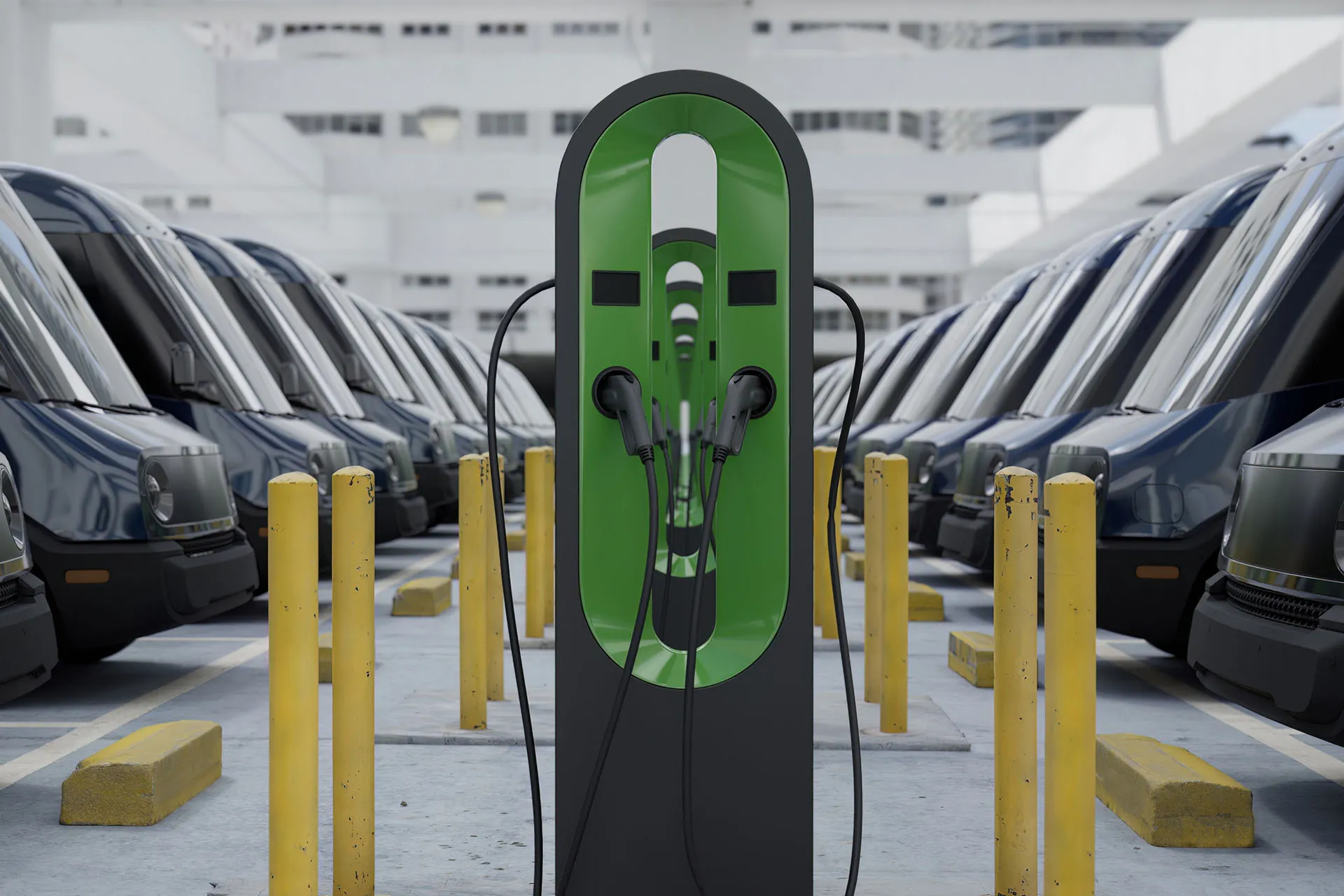Utility Solutions
Transportation Electrification
Residential Transportation Electrification
Bolster the efficiency and impact of TE programs end-to-end
As the adoption of electric vehicles (EVs) continues to expand, utilities and energy agencies scaling residential transportation electrification (TE) programs can run into difficulties.
Provide a fully digitalized solution to support customer targeting, outreach, education, enrollment, and post-enrollment customer engagement. Successfully address challenges facing TE programs including charger installations/rebates, managed charging, and TOU rate enrollment. Gain insights and incentivize good charging behavior.
Common Residential Transportation Electrification Challenges
- Burdened customer service and energy program teams – TE inquiries and applications overwhelm utility staff.
- Delayed processing – Processing applications through email and spreadsheets leads to errors and backlogs.
- Reporting requirements – Tracking and missing deadlines can be frustrating and costly.
- No insight into future EV adoption – Outreach for EV programs and rate enrollment is difficult and grid instability is a risk.

Commercial Transportation Electrification
Simplify complex commercial program workflows
Commercial EV charger adoption is accelerating among multi-family properties, workplaces and public charging sites. Utilities and energy agencies can experience operational difficulties as they attempt to meet customer demand.
The complexity of make-ready programs—spanning feasibility to energization—demands a quick-to-deploy, scalable and flexible solution to address challenges impacting program success.
Common Commercial Transportation Electrification Challenges
- Too many speculative project inquiries – Commercial customers and installers overwhelm staff, including engineers, with inquiries and site feasibility requests.
- Application backlog – Incomplete and incorrect make-ready project applications prolong project timelines. Manual email and spreadsheet tracking further burdens staff.
- Reporting requirements – Complex regulatory reporting can cause bottlenecks and missed deadlines can be expensive.
- Reduced productivity – Program data residing in multiple utility systems can cause double-data entry errors and hassle.
Common Residential Transportation Electrification Challenges
- Burdened customer service and energy program teams – TE inquiries and applications overwhelm utility staff.
- Delayed processing – Processing applications through email and spreadsheets leads to errors and backlogs.
- Reporting requirements – Tracking and missing deadlines can be frustrating and costly.
- No insight into future EV adoption – Outreach for EV programs and rate enrollment is difficult and grid instability is a risk.
Common Commercial Transportation Electrification Challenges
- Too many speculative project inquiries – Commercial customers and installers overwhelm staff, including engineers, with inquiries and site feasibility requests.
- Application backlog – Incomplete and incorrect make-ready project applications prolong project timelines. Manual email and spreadsheet tracking further burdens staff.
- Reporting requirements – Complex regulatory reporting can cause bottlenecks and missed deadlines can be expensive.
- Reduced productivity – Program data residing in multiple utility systems can cause double-data entry errors and hassle.
By adopting Clean Power Research’s transportation electrification solution, utilities can scale their EV programs, improve the program team experience and speed up project lifecycles.
Residential TE Solution Benefits
- Provide self-serve customer education for EV, charging and rate choices: Offer personalized EV, charging and rate analyses in a self-service customer-facing tool.
- Receive uniform, eligible and complete applications: Streamline application processes and accelerate project timelines with form validation that reduces ineligible or inaccurate applications.
- Streamline reporting: Visualize operational workflow data, schedule detailed reports, and connect data with tools like Power BI and Excel.
- Model and analyze EV impact: Model EV adoption scenarios, detect Level 2 charging and enroll customers into managed charging programs.
Commercial TE Solution Benefits
- Provide up-front eligibility self-screening: Reduce customer and installer inquiries by providing a simple self-serve eligibility check as step one.
- Automate communications: Keep applicants and stakeholders informed of key status changes and approaching deadlines, and track all communications in one central location.
- Streamline reporting: Automate and share granular program data across your utility and identify bottlenecks.
- Integrate with other tools: Ensure reliable and consistent data by easily integrating PowerClerk® with other tools and data sources.
Case Studies

ENE drives EV awareness with WattPlan
Energy New England (ENE) has partnered with local municipal utilities to provide energy efficiency programs and services to their residential and commercial customers. To improve participation, ENE needed to help municipal utilities educate customers on their electrification options.
Learn how ENE leveraged WattPlan® to offer holistic EV program awareness and education for their partner utilities and utility customers.
O&R streamlines EV make-ready program with PowerClerk
New York State and O&R have established ambitious goals to scale the deployment of electric vehicle infrastructure. To achieve these goals, O&R needed to improve its EV make-ready program application and project review processes to reduce real-time backlogs and facilitate detailed regulatory reporting.
Learn about O&R’s results and accomplishments, including reducing its EV make-ready project lifecycle by an impressive 60%, while scaling its EV infrastructure by implementing PowerClerk.
Ready to take the wheel with a holistic solution for residential and commercial programs? Contact us to learn more!
A suite of products to oversee transportation electrification programs end-to-end
Offer on-demand, self-service assessments for a wide range of renewable energy, EV and rates offerings with Wattplan®

